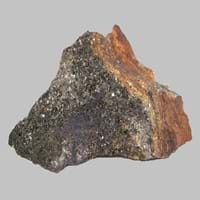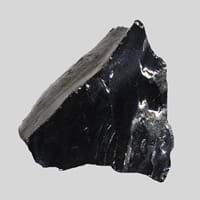Definition
Hornfels is a metamorphic rock formed by the contact between mudstone or other clay rich rock, and a hot igneous body, and represents a heat altered equivalent of the original rock
Anthracite is a type of sedimentary rock which is hard and is variety of coal that has high luster
Origin
New Zealand
Pennsylvania, U.S.
Discoverer
Unknown
Unknown
Etymology
From German which means hornstone
From Greek anthrakites, from anthrax, anthrak meaning coal
Class
Metamorphic Rocks
Metamorphic Rocks
Sub-Class
Durable Rock, Soft Rock
Durable Rock, Soft Rock
Group
Not Applicable
Not Applicable
Other Categories
Fine Grained Rock, Opaque Rock
Coarse Grained Rock, Fine Grained Rock, Medium Grained Rock, Opaque Rock
Texture
Granular, Platy
Amorphous, Glassy
Color
Brown, Dark Greenish - Grey, Green, Reddish Brown
Black, Brown, Dark Brown, Grey, Light to Dark Grey
Durability
Durable
Durable
Appearance
Dull
Veined or Pebbled
Interior Uses
Decorative Aggregates, Flooring, Homes, Interior Decoration
Not Yet Used
Exterior Uses
As Building Stone, As Facing Stone, Garden Decoration, Office Buildings, Paving Stone
Not Yet Used
Other Architectural Uses
Curbing
Not Yet Used
Construction Industry
for Road Aggregate, Roadstone
Cement Manufacture, for Road Aggregate, Making natural cement, Steel Production
Medical Industry
Not Yet Used
In Chemical and Pharmaceutical Industry, Manufacture of Aspirins
Antiquity Uses
Artifacts, Monuments
Not Yet Used
Commercial Uses
Cemetery Markers, Commemorative Tablets, Creating Artwork
Alumina Refineries, Electricity Generation, Liquid Fuel, Manufacture of Soap, Solvents, Dyes, Plastics and Fibres, Paper Industry
Types
Biotite hornfels
Semi-anthracite and Meta-anthracite
Features
Smooth to touch
Helps in production of Heat and Electricity, Used as fossil fuel
Archaeological Significance
Monuments
Used
Not Yet Used
Famous Monuments
Data Not Available
Not Applicable
Sculpture
Not Yet Used
Not Yet Used
Famous Sculptures
Not Applicable
Not Applicable
Figurines
Not Yet Used
Not Yet Used
Formation
Due to change in environmental conditions, rocks are heated and pressurized deep inside the Earth's surface. Hornfels is formed from the extreme heat caused by magma or by the intense collisions and friction of tectonic plates.
Anthracite forms from the accumulation of plant debris in a swamp environment. When plant debris dies and falls into the swamp, the standing water of the swamp protects it from decay.
Mineral Content
Andalusite
Calcite, Clay, Clay Minerals
Compound Content
Fe, Mg
Carbon, Hydrogen, Nitrogen, Oxygen, Sulphur
Types of Metamorphism
Not Applicable
Burial Metamorphism, Contact Metamorphism, Regional Metamorphism
Types of Weathering
Biological Weathering
Not Applicable
Types of Erosion
Chemical Erosion, Glacier Erosion, Sea Erosion, Water Erosion, Wind Erosion
Not Applicable
Grain Size
Fine Grained
Medium to Fine Coarse Grained
Fracture
Conchoidal
Conchoidal
Porosity
Highly Porous
Less Porous
Compressive Strength
Not Available
Cleavage
Perfect
Non-Existent
Toughness
Not Yet Found
Not Available
Specific Gravity
3.4-3.9
1.1-1.4
Transparency
Opaque
Opaque
Density
0.25-0.30 g/cm3
1.25-2.5 g/cm3
Resistance
Heat Resistant, Impact Resistant, Pressure Resistant
Heat Resistant, Water Resistant
Deposits in Eastern Continents
Asia
Bangladesh, Bhutan, China, India, North Korea, Qatar, Russia, Saudi Arabia, South Korea, Thailand
Bangladesh, Burma, Cambodia, China, India, Indonesia, Kazakhstan, Malaysia, Mongolia, Pakistan, Turkey, Vietnam
Africa
Cameroon, East Africa, Tanzania, Western Africa
Botswana, Kenya, Morocco, Mozambique, South Africa, Tanzania
Europe
United Kingdom
Belgium, Bulgaria, England, France, Germany, Greece, Hungary, Kosovo, Netherlands, Norway, Poland, Romania, Serbia, Slovakia, Slovenia, The Czech Republic, Ukraine, United Kingdom
Others
Not Yet Found
Not Yet Found
Deposits in Western Continents
North America
Canada, USA
Canada, Mexico, USA
South America
Bolivia, Brazil, Colombia, Ecuador
Brazil, Chile, Colombia, Venezuela
Deposits in Oceania Continent
Australia
New South Wales, New Zealand, Queensland, Western Australia
New South Wales, Queensland, Victoria
Hornfels vs Anthracite Characteristics
Though some rocks look identical, they have certain characteristics which distinguish them from others. Characteristics of rocks include texture, appearance, color, fracture, streak, hardness etc. Hornfels vs Anthracite characteristics assist us to distinguish and recognize rocks. Also you can check about Properties of Hornfels and Properties of Anthracite. Learn more about Hornfels vs Anthracite in the next section. The interior uses of Hornfels include Decorative aggregates, Flooring, Homes and Interior decoration whereas the interior uses of Anthracite include Not yet used. Due to some exceptional properties of Hornfels and Anthracite, they have various applications in construction industry. The uses of Hornfels in construction industry include For road aggregate, Roadstone and that of Anthracite include Cement manufacture, For road aggregate, Making natural cement, Steel production.
More about Hornfels and Anthracite
Here you can know more about Hornfels and Anthracite. The life cycle of a rock consists of formation of rock, composition of rock and transformation of rock. The composition of Hornfels and Anthracite consists of mineral content and compound content. The mineral content of Hornfels includes Andalusite and mineral content of Anthracite includes Calcite, Clay, Clay Minerals. You can also check out the list of all Metamorphic Rocks. When we have to compare Hornfels vs Anthracite, the texture, color and appearance plays an important role in determining the type of rock. Hornfels is available in brown, dark greenish - grey, green, reddish brown colors whereas, Anthracite is available in black, brown, dark brown, grey, light to dark grey colors. Appearance of Hornfels is Dull and that of Anthracite is Veined or Pebbled. Properties of rock is another aspect for Hornfels vs Anthracite. The hardness of Hornfels is 2-3 and that of Anthracite is 1-1.5. The types of Hornfels are Biotite hornfels whereas types of Anthracite are Semi-anthracite and Meta-anthracite. Streak of rock is the color of powder produced when it is dragged across an unweathered surface. The streak of Hornfels is unknown while that of Anthracite is black. The specific heat capacity of Hornfels is 0.84 kJ/Kg K and that of Anthracite is 1.32 kJ/Kg K. Depending on the properties like hardness, toughness, specific heat capacity, porosity etc., rocks are resistant to heat, wear, impact, etc.Hornfels is heat resistant, impact resistant, pressure resistant whereas Anthracite is heat resistant, water resistant.





